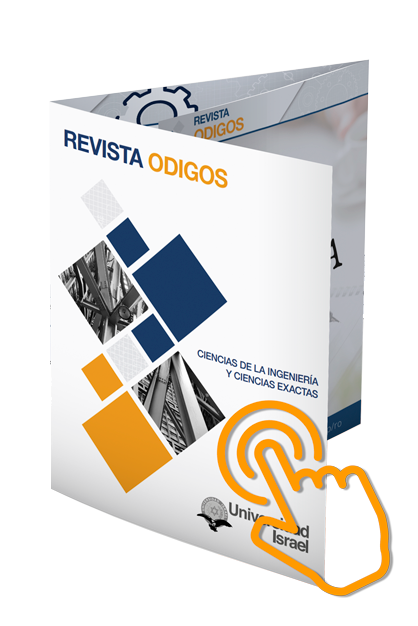Servicio Android para interconectar el broker de mensajería Mosquitto (MQTT)
DOI:
https://doi.org/10.35290/ro.v3n1.2022.539Palabras clave:
servicio, android, Mosquito, MQTTResumen
Los mensajes en tiempo real son utilizados en un alto nivel por diferentes aplicaciones informáticas, existen diferentes servidores, protocolos, etc., que se pueden utilizar y están disponibles en Internet; sin embargo, estos están creados de tal manera que el consumo de recursos computacionales es muy elevado y solo sería óptimo si se utiliza un servidor con grandes prestaciones. Este trabajo de investigación tiene como objetivo desarrollar un servicio sobre Android, que sirva de interfaz con el broker de mensajería Mosquitto (MQTT) que proporcione un mecanismo adecuado para recibir peticiones de una aplicación Android y al mismo tiempo también notifique que han llegado unos datos, mismo que se almacenan en el gestor SQLITE, que utiliza pocos recursos computacionales y es adecuado para pequeñas aplicaciones, que están probando protocolos y servidores de mensajería. Los resultados experimentales muestran que el servicio cumple con los objetivos iniciales del trabajo, permitiendo crear un sistema de mensajería basado en editores y suscriptores para la plataforma Android.
Descargas
Referencias
Barata, D., Louzada, G., Carreiro, A., & Damasceno, A. (2013). System of acquisition, transmission, storage and visualization of Pulse Oximeter and ECG data using Android and MQTT. Procedia Technology, 9, 1265-1272.
Hwang, H. C., Park, J., & Shon, J. G. (2016). Design and implementation of a reliable message transmission system based on MQTT protocol in IoT. Wireless Personal Communications, 91(4), 1765-1777.
Iyer, S., Bansod, G. v., Praveen Naidu, V., & Garg, S. (2018). Implementation and Evaluation of Lightweight Ciphers in MQTT Environment. 3rd International Conference on Electrical, Electronics, Communication, Computer Technologies, and Optimization Techniques, ICEECCOT 2018, 276–281. https://doi.org/10.1109/ICEECCOT43722.2018.9001599
Katsikeas, S., Fysarakis, K., Miaoudakis, A., Van Bemten, A., Askoxylakis, I., Papaefstathiou, I., & Plemenos, A. (2017). Lightweight & secure industrial IoT communications via the MQ telemetry transport protocol. In 2017 IEEE Symposium on Computers and Communications (ISCC) (pp. 1193-1200).
https://doi.org/10.1109/ISCC.2017.8024687
Lee, S., Kim, H., Hong, D. K., & Ju, H. (2013). Correlation analysis of MQTT loss and delay according to QoS level. In The International Conference on Information Networking 2013 (ICOIN) (pp. 714-717).
Manh Pham, L., Nguyen, T.-T., & Tran, M.-D. (2019). A Benchmarking Tool for Elastic MQTT Brokers in IoT Applications. International Journal of Information and Communication Sciences, 4(4), 59. https://doi.org/10.11648/J.IJICS.20190404.11
Nemetz, S., Schmitt, S., & Freiling, F. (2018). A standardized corpus for SQLite database forensics. Digital Investigation, 24, S121–S130. https://doi.org/10.1016/J.DIIN.2018.01.015
Peiji, L, & Yanai, W. (2001). The Application of Push Technology in Mobile Internet Communications World, 31, pp. 31 - 32.
Schiper, A., & Raynal, M. (1996). From group communication to transactions in distributed systems. Communications of the ACM, 39(4), 84-87. https://dl.acm.org/doi/abs/10.1145/227210.227230
Shaoyue, H., Xiaodong, X., & Zuyuan, M. (2012). The Application of Active Push Technology in Mobile Collaboration Education [J]. Modern Education Technology, 4, 100-103.
Silva, C., Toasa, R., Martinez, H. D., Veloz, J., & Gallardo, C. (2017). Secure push notification service based on MQTT protocol for mobile platforms. In XII Jornadas Iberoamericanas de Ingeniería de Software e Ingeniería del Conocimiento y Congreso Ecuatoriano en Ingeniería de Software (pp. 69-84).
Tang, K., Wang, Y., Liu, H., Sheng, Y., Wang, X., & Wei, Z. (2013). Design and implementation of push notification system based on the MQTT protocol. In International Conference on Information Science and Computer Applications (ISCA 2013) (pp. 116-119). Atlantis Press.
Zhang, W. M., Zhang, M., Bi, J., & Qin, Z. (2007). Instant messaging: The present and the future. MINIMICRO SYSTEMS-SHENYANG-, 28(7), 1162-1168. https://en.cnki.com.cn/Article_en/CJFDTotal-XXWX200707001.htm
Descargas
Publicado
Número
Sección
Licencia
Derechos de autor 2022 Cristian Mauricio Gallardo Paredes, Patricia del Rocío Rodríguez Fiallos y Francisco Javier Galora Silva

Esta obra está bajo una licencia internacional Creative Commons Atribución 4.0.
Los autores que participen de los procesos de evaluación y publicación de sus ediciones conservan sus derechos de autor, cediendo a la revista el derecho a la primera publicación, tal como establecen las condiciones de reconocimiento en la licencia Creative Commons Reconocimiento 4.0 Internacional (CC BY), donde los autores autorizan el libre acceso a sus obras, permitiendo que los lectores copien, distribuyan y transmitan por diversos medios, garantizando una amplia difusión del conocimiento científico publicado.
- Toda derivación, a partir de esta obra, deberá citar la fuente y a la primera publicación en esta revista. Se permiten derechos comerciales no lucrativos sobre sus contenidos.
- Los autores pueden realizar otros acuerdos contractuales independientes y adicionales para la distribución no exclusiva de la versión del artículo publicado en esta revista, es decir, podrán incluirlo en un repositorio institucional o publicarlo en un libro, siempre que indiquen claramente que el trabajo se publicó por primera vez en esta revista.
- Se permite y recomienda a los autores compartir su trabajo en línea, con la finalidad de intercambios productivos para una mayor y más rápida citación del trabajo como lo establece los efectos del movimiento ‘Acceso Abierto’.
- No puede aplicar términos legales o medidas tecnológicas que restrinjan legalmente a otros de hacer cualquier cosa que permita la licencia: https://creativecommons.org/licenses/by/4.0/deed.es
- La Revista ODIGOS es financiada completamente de los aportes realizados por nuestra entidad editora: Universidad Tecnológica Israel; por tal motivo, no establece cargos o cobros de ninguna índole a sus autores y colaboradores, así como tampoco genera pagos o remuneraciones de ningún tipo a ellos.
- Se asignará un Digital Object Identifier (DOI) a cada publicación.




